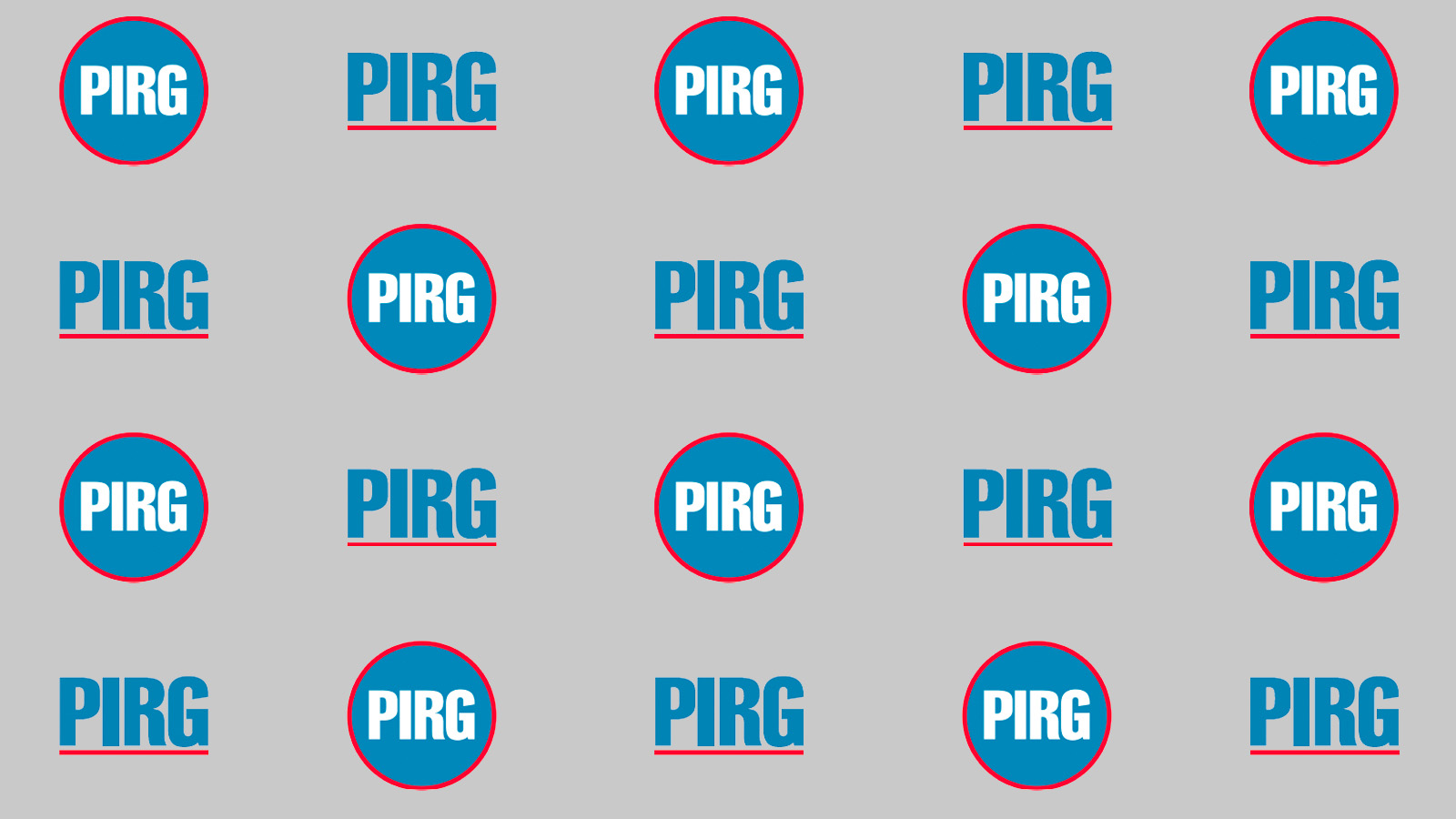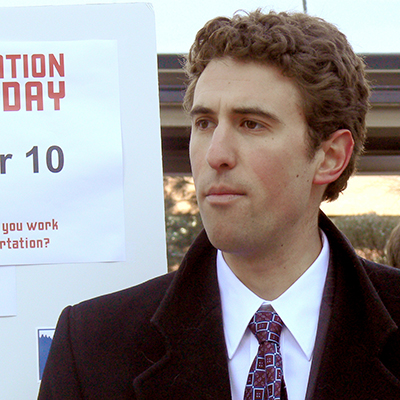
Transportation funding needs to focus on hitting two key 2030 goals
Whether we want to tackle climate change, clean up our air, eliminate traffic fatalities, or give more people the freedom to choose how they travel around, we need to focus transportation dollars on two main goals over the next decade - convert 1 million vehicles from gas-powered to electric and reduce the amount of vehicle miles traveled by 10%. That’s going to take a lot more electric vehicle infrastructure and support. We also should aim to double the amount of people using transit, or completing trips via walking, rolling or biking.
Today, a team of Colorado elected leaders released some concepts around a potential transportation funding bill that the legislature will likely begin debating sometime in April.
One thing is clear to me – any transportation dollars we spend over the next decade need to transform our transportation system in a way that speeds up our conversion to 100% electric-powered vehicles and ramps up the amount of trips that are completed riding transit or walking, biking and rolling.
Our transportation system has a number of well-documented problems from air pollution that harms our health and is a leading contributor of climate change to an obscene amount of fatalities, especially among people who are just trying to cross the street.
Given how inadequately our transit, walking and biking infrastructure has been built out over the years, most people have no real choice or freedom to travel in their neighborhood, within their city or across the state without owning and operating a car.
For example, we found Colorado is missing 6,000 miles of sidewalks in urban areas – it doesn’t encourage people to walk if you are forced into the street, especially if you are pushing a stroller or in a wheelchair.
Until Bustang launched in July 2015, we didn’t really have a statewide transit system either. While Bustang ridership has skyrocketed since launching, demonstrating a clear need for expansion, the service itself is still relatively limited with a dozen or so round trips a day along I-70 and I-25 and some newer routes via the Outrider program into more rural parts of the state.
Bustang is great. But we need a lot more.
Just looking at this from the perspective of tackling climate change, Colorado needs to accomplish two things in the next ten years to hit the Governor’s greenhouse gas reduction 2030 goals laid out in his recent GhG Pollution Reduction Roadmap – Convert 1 million gas-powered vehicles to electric-powered and reduce the amount of vehicle miles traveled (VMT) by 10%.
Meeting these climate goals will also help us reduce other harmful air pollutants, improve safety, and increase the accessibility and affordability of transportation in Colorado (especially the more that people can forgo the nearly $9,000 expense of vehicle ownership).
There is no one action to meet these goals.
On the electric vehicle side, we need more infrastructure.
The recently approved Transportation Electrification Plan from Xcel Energy is a good example of how utilities can play a big role. Environment Colorado helped secure a partnership with the Colorado Parks and Wildlife Commission and Rivian to build out EV charging stations at state parks. State funding can play a role by focusing dollars to fill in any gaps in our EV charging infrastructure and to give local governments, transit agencies, school districts, and private fleets the technical and financial assistance they need to more quickly make the switch to electric-powered cars, buses and trucks.
To reduce VMT by 10%, we also need a suite of solutions.
Here’s a place to start. Recently, DRCOG, the metropolitan planning organization for the Denver region, released a draft 2050 vision for transportation in the region.
According to DRCOG, 74% of people commute to work via a single-occupant vehicle. 4% use public transit and 4% walk or bike.

Travel modes – DRCOG 2050 Metro Vision and Transportation Plan
To reduce VMT by 10% let’s begin by doubling the percent of people who ride transit, walk or bike to work.
But let’s not just focus on commuting. We make so many more trips each day than just to work and back. We drop off and pick up kids at school, we go to medical appointments, pick up groceries and shop and eat at businesses all around our communities.
According to DRCOG, nearly half of the trips we take in the Denver metro region are short – less than three miles.
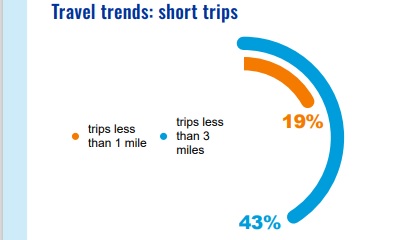
Travel trends short trips – DRCOG 2050 Metro Vision and Transportation Plan
These trips can be done walking and biking (even more so if we expand e-bikes to more people through programs like Can Do Colorado) as well as transit.
But to ensure we are truly giving people the freedom to ride transit or walk or bike or roll we need to have safe, people-friendly infrastructure and a transit system that is fast, frequent, and reliable. This is where we need to focus our dollars.
People-friendly infrastructure means filling in the gaps in our sidewalk system and doing a better job of maintaining what we have. It also means improving the design of our local streets to reduce the dangers that push many people away from walking. Eliminating blind spots, narrowing pedestrian crossings, having the right speed limits, adding flashing pedestrian lights, and changing signals so pedestrians and turning vehicles are not forced to compete with each other.
We also need a better bike system, one in which not just avid cyclists but families pulling trailers feel comfortable. In the Denver metro region, there are a lot of people who would bike if our streets were more safe.
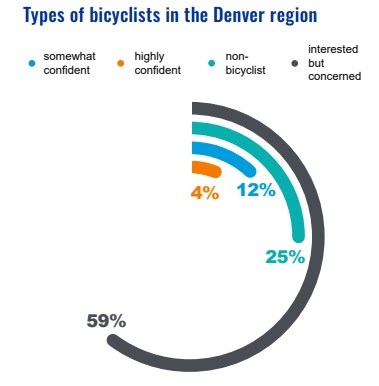
Type of bicyclists – DRCOG 2050 Metro Vision and Transportation Plan
Finally, we need a big expansion of transit.
We need more bus-rapid transit routes like Flatiron Flyer along major arterial roads in the Denver metro area but also big population centers like Colorado Springs and Grand Junction as well as the fast-growing Northern Colorado communities of Loveland, Fort Collins, and Greeley. These routes need dedicated space and lanes so we can offer fast and reliable options. It also needs to run frequently.
We need better rural transit services that ensure everyone has a way to access medical appointments and critical services, especially for people aging out of driving or who struggle to afford owning and operating a car.
But the biggest thing we need is just more transit service that is frequent enough that if you miss a bus or train, another will be along within 10 minutes. We need this service not just for morning and evening commutes but service that runs late into the night when so many people still work and many more are taking advantage of the entertainment, food and culture that makes Colorado great.
A TransitCenter analysis of the National Transit Database found that in 2018, transit ridership increased in seven of the 35 regions with the highest transit usage. Of those seven regions, six – Seattle, Houston, Austin, San Antonio, Las Vegas and Pittsburgh – had either substantially increased transit service since 2013, or had recently reoriented their transit networks to meet growing demand.
One last need – roads.
But not the roads of years past, designed mostly to move cars as fast as possible. And certainly not more general purpose highway lanes that fail to meet our travel needs and simply encourage more driving.
We need to maintain what we have and fix the bridges and roads that need repair. If you think hitting a big pothole is annoying in your vehicle, it can be life-altering on a bicycle. Ensuring our current infrastructure is maintained is critical for buses, bikes, and the people who cross these streets.
This isn’t just an urban issue – a well-maintained and safe rural road with a nice shoulder is important for transit services but also for bicyclists who use those shoulders to get from point A to point B. Money to maintain our roads is money that supports our VMT reduction goals.
In the weeks to come, the debate around transportation funding will pick up steam. The dollars we spend now will build the transportation system we own and use for decades. We need to ensure that our future transportation system is more electric and helps more people walk, bike, roll and take transit.
Topics
Authors
Danny Katz
Executive Director, CoPIRG
Danny has been the director of CoPIRG for over a decade. Danny co-authored a groundbreaking report on the state’s transit, walking and biking needs and is a co-author of the annual “State of Recycling” report. He also helped write a 2016 Denver initiative to create a public matching campaign finance program and led the early effort to eliminate predatory payday loans in Colorado. Danny serves on the Colorado Department of Transportation's (CDOT) Efficiency and Accountability Committee, CDOT's Transit and Rail Advisory Committee, RTD's Reimagine Advisory Committee, the Denver Moves Everyone Think Tank, and the I-70 Collaborative Effort. Danny lobbies federal, state and local elected officials on transportation electrification, multimodal transportation, zero waste, consumer protection and public health issues. He appears frequently in local media outlets and is active in a number of coalitions. He resides in Denver with his family, where he enjoys biking and skiing, the neighborhood food scene and raising chickens.
Find Out More
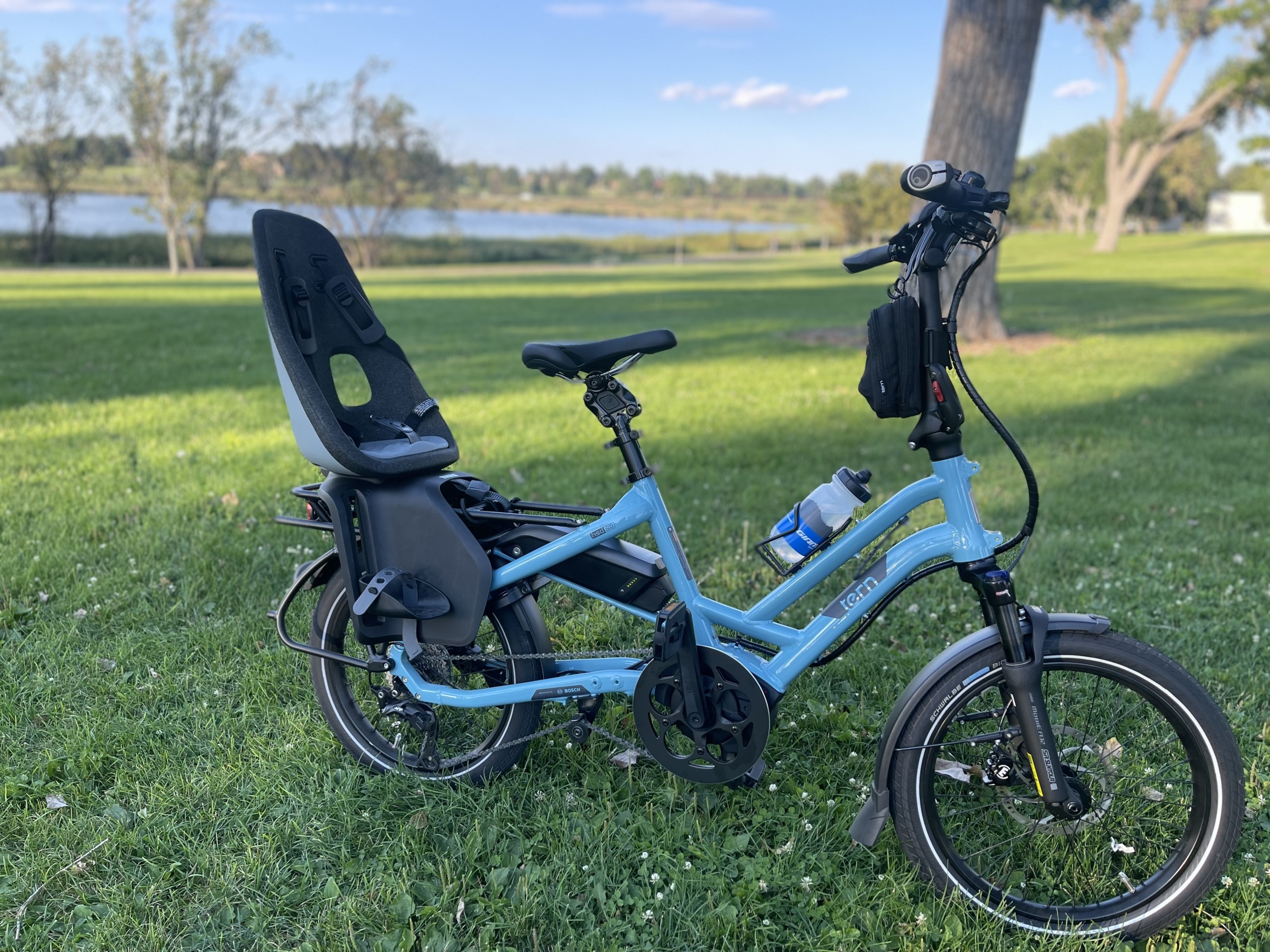
How to get the Colorado state e-bike tax credit
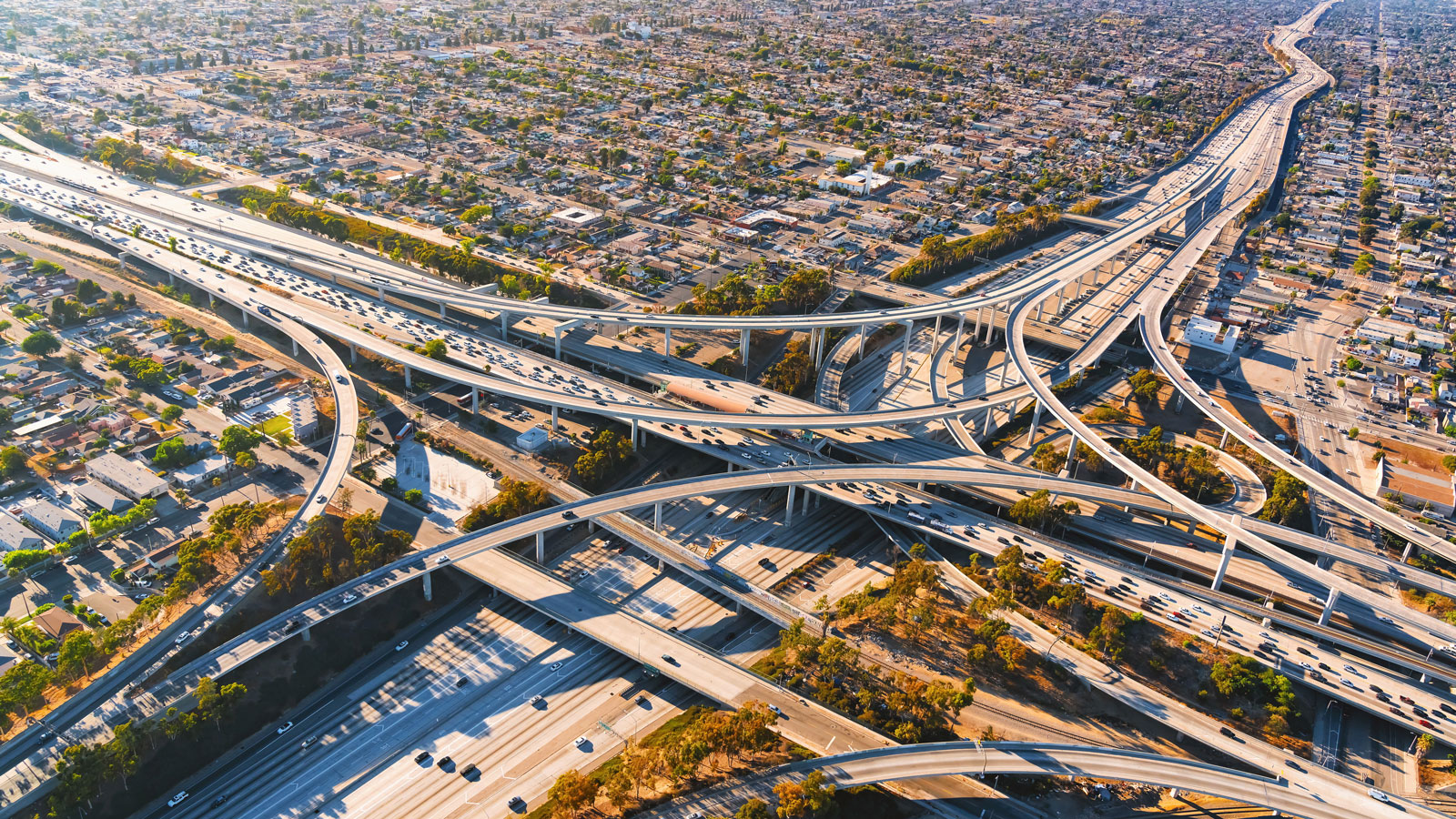
A threat to federal climate investment: Highway boondoggles
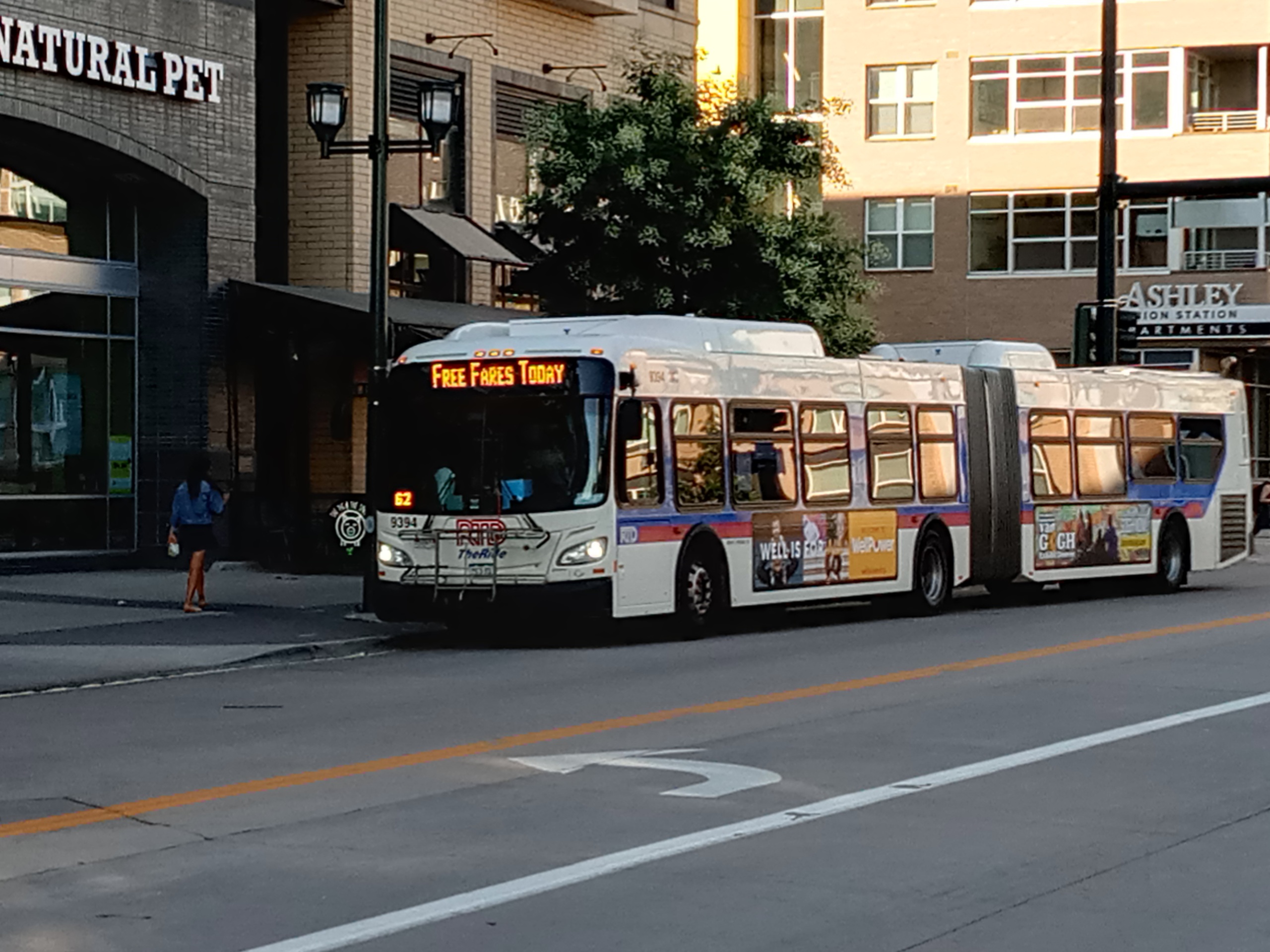
Every bus, every train will be free to ride in the Denver area July and August
